Can you change your metabolism to ride faster?
The rate at which you burn carbs and fats has a pivotal impact on your cycling performance. Can this rate be changed or is it fixed by your genes?
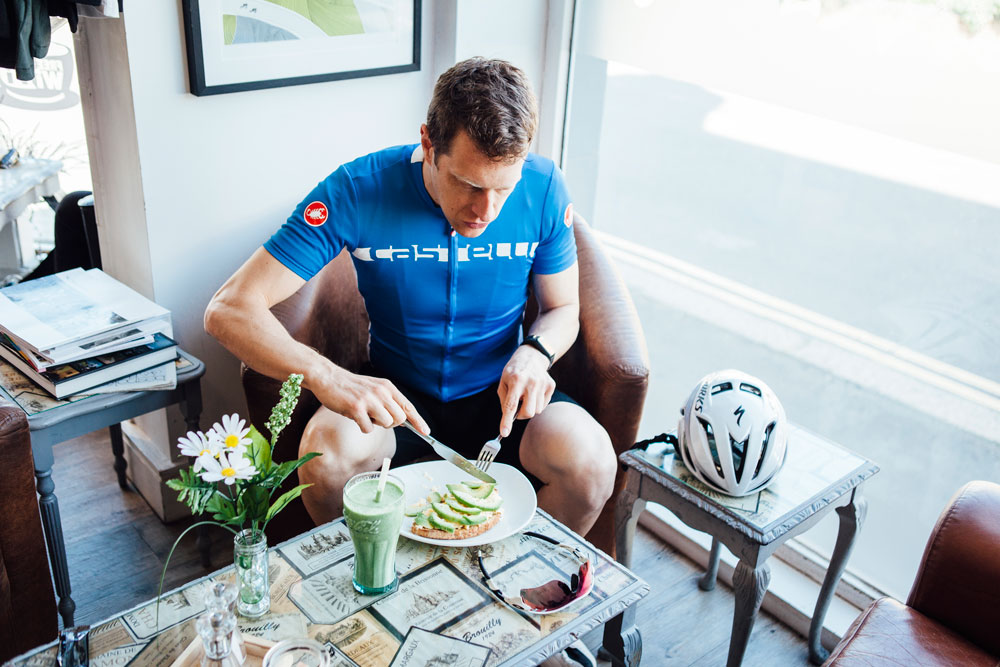
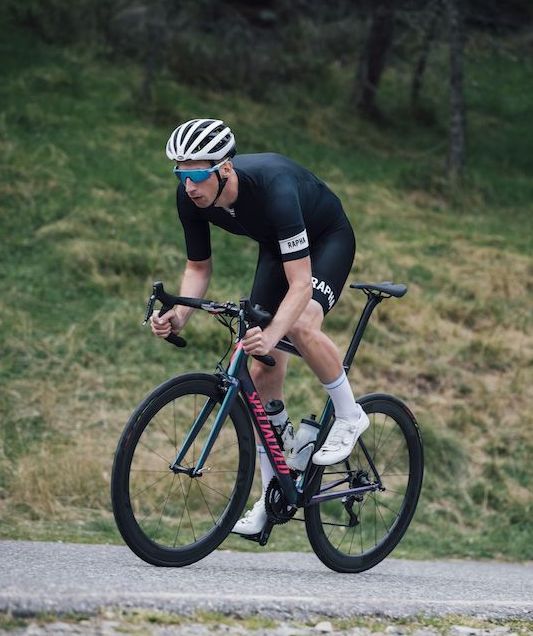
Words by: Vicky Ware
We’ve all heard cyclists who are struggling to lose weight blame their ‘slow metabolism’ — implying that they burn fewer calories at rest than someone with a fast or normal metabolism.
But does metabolism really work like that? Is it determined by the genes we are born with, or can we alter it through our training and diet?
If we can change our metabolism, can we do so in ways that improve our cycling performance?
Metabolism describes all the chemical reactions that take place in the body. These reactions, catalysed by enzymes, are how the body converts what you eat into useable energy.
In assessing slow versus fast metabolism, we need to refer to resting metabolic rate (RMR) — a more precise term than simply ‘metabolism’.
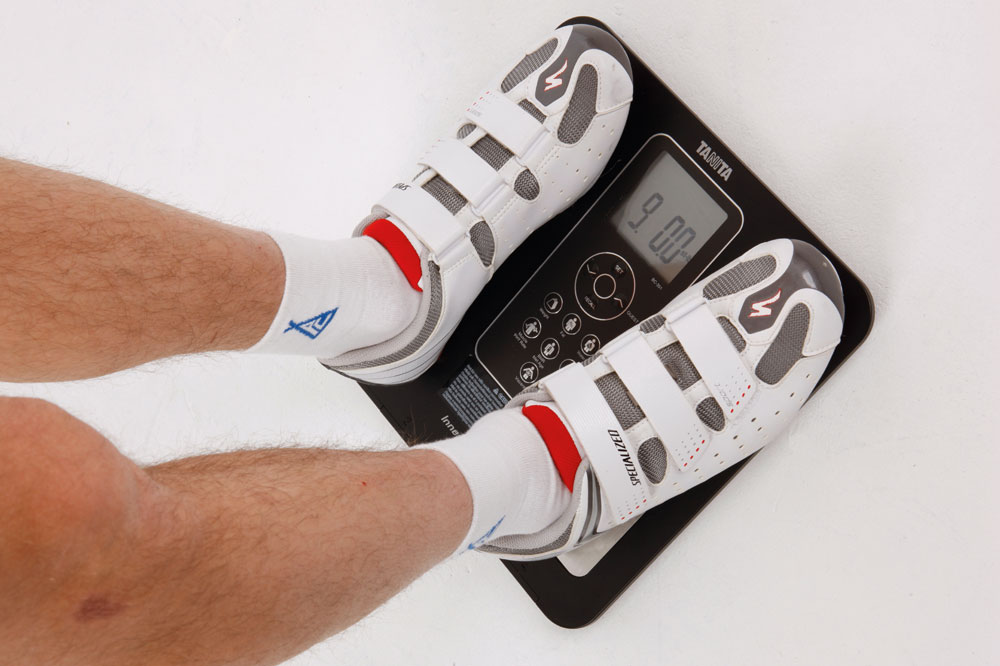
RMR is the number of calories required simply to stay alive at rest, which generally accounts for 60-70 per cent of the calories we eat per day.
Get The Leadout Newsletter
The latest race content, interviews, features, reviews and expert buying guides, direct to your inbox!
The number of calories each person needs (to exist) differs widely, depending on mass and body composition. Muscle is metabolically active, whereas fat uses very little energy, meaning muscular people have a higher RMR.
Hormones play a part too. Being genetically predisposed to have high testosterone may increase your RMR because you’ll likely have more muscle.
As you grow old, you gradually lose muscle mass — around one to two per cent per decade from age 30 — and so your RMR declines too.
>>> The calorie conundrum: Is it what you eat, or how much that helps you lose weight?
There are many metabolic pathways in the body. Of greatest interest to cyclists are those that break down carbohydrates, proteins, and fats for energy, and those that allow anabolic reactions to build muscle.
The body preferentially burns carbohydrate when exercising hard. At 25 per cent of VO2 max, you burn mostly fat; above 70 per cent of VO2 max, the fuel is almost exclusively carbohydrate.
Fat becomes more important at moderate intensity if the effort is prolonged, but it cannot fuel very intense effort. At rest, the body’s preferred fuel is fat, but this varies between individuals, partly depending on diet. Those who eat mostly carbohydrate tend to burn more carbs and less fat.
Crunching the numbers
7,700kcal
Calorie deficit required to lose 1kg body fat. It takes around 12hr of cycling to burn that amount.
2,500kcal
The NHS recommended daily calorie intake for men. Be warned, there is no such thing as a typical requirement. It depends on your body size and activity levels; you may need far more or quite a lot less food than this guideline implies.
1,600kcal
Approximate difference in daily calorie requirement between a large, muscular athelete and a slight, inactive man.
35kcal per day
Energy burned by each 0.45kg of muscle.
2kcal per day
Energy burned by each 0.45kg body fat.
1kcal/W/hr x 3.6
One calorie per watt per hour times 3.6: this equation provides a rough estimate of your calorie usage while cycling, i.e. holding 200W for 3hr burns 2,160kcal (600 x 3.6).
64% of VO2max
This is the level of intensity, in trained people, at which fat oxidation is maximised. If you want to burn mostly fat, don't ride hard.
Metabolic flexibility
It is possible to get better at burning fat, thus sparing carbs while exercising, even while working moderately hard. This is clearly useful in that it saves glycogen for when it is really needed for hard efforts.
When glycogen runs out, the body is forced to use emergency fuel sources. Team Sky were rumoured to be using ketone-containing drinks, probably because ketones are the end-product of fat metabolism and can be used as fuel.
Watch now: Five ultimate foods for cyclists
On a ketogenic diet, carbs make up only three to eight per cent of calorific intake. This diet is followed for six months in an attempt to make the body better at burning fat.
However, though some ultra-endurance athletes swear by this Spartan regime, there is scant evidence to suggest it could be beneficial for cyclists whose riding involves high intensity.
Professor of exercise metabolism and consultant Asker Jeukendrup (mysportscience.com) explains:
“If you train only your fat metabolism, you will inevitably detrain your carbohydrate metabolism: an unwanted side effect. If you always train with carbohydrate, you will become very carbohydrate-dependent and de-train your fat metabolism.”
Inadequate carbohydrate metabolism reduces the ability of muscle to produce high power and sustain intense effort.
>>> Watch – Training zones: what are they and why do they matter?
But become too carb-dependent and you’ll under-use fat stores, making you more likely bonk in long events; you might also find it harder to lose excess weight.
Ideally we need metabolic flexibility to enable us to switch between carbohydrate and fat, saving precious carb stores whenever possible.
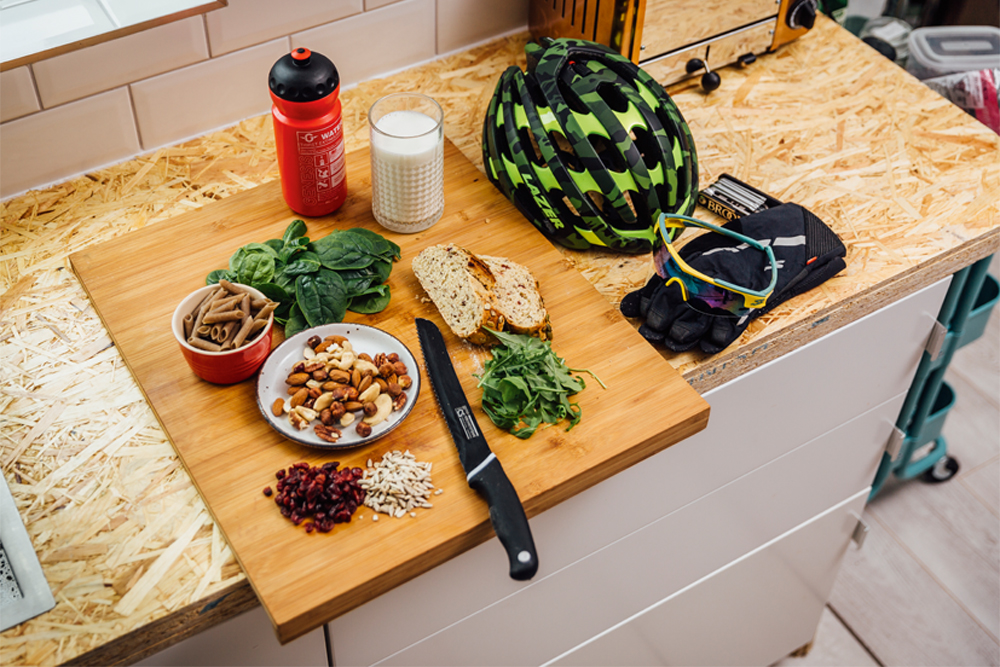
Carb-cycling — that is, reducing the amount of carbohydrate you eat at specific times of the day, week, month or even year — is a way to improve metabolic flexibility.
The basic premise is to earn your carbs with exercise.
Jeukendrup explains: “The ideal diet is one that varies and is highly integrated with training.
>>> Could cutting carbs help you ride faster?
"Sometimes low-carb, sometimes high-carb, depending on the goals of the training. You would not do just one type of training every day, so why follow the exact same diet day after day?”
One way to do this is with fasted exercise, though this should be done carefully, as low-carb training raises cortisol levels, which can lead to health and performance issues.
Try completing one or two training sessions per week after eating only protein and fat for breakfast. This will stimulate metabolic pathways that favour fat for fuel.
Eating your carbohydrate afterwards reloads muscle glycogen and prevents cortisol from remaining high.
These low-carb sessions should be completed at an easy to moderate pace and should be an hour or more in duration.
This type of training is especially beneficial for those who generally favour a high-carb diet and who find their energy levels noticeably rise and fall between gels or carb-high snacks.
Fat-burning, fine-tuned
Another way to become a good fat-burner, without specific low-carb rides, is to follow a relatively low-carb diet with only 25-30 per cent of calories coming from carbs.
Eating these carbs before, during and after training but not during the rest of the day prompts the body to adapt metabolically and burn more fat while at rest but without disrupting hormone levels.
It should be possible to stimulate metabolic changes within six weeks.
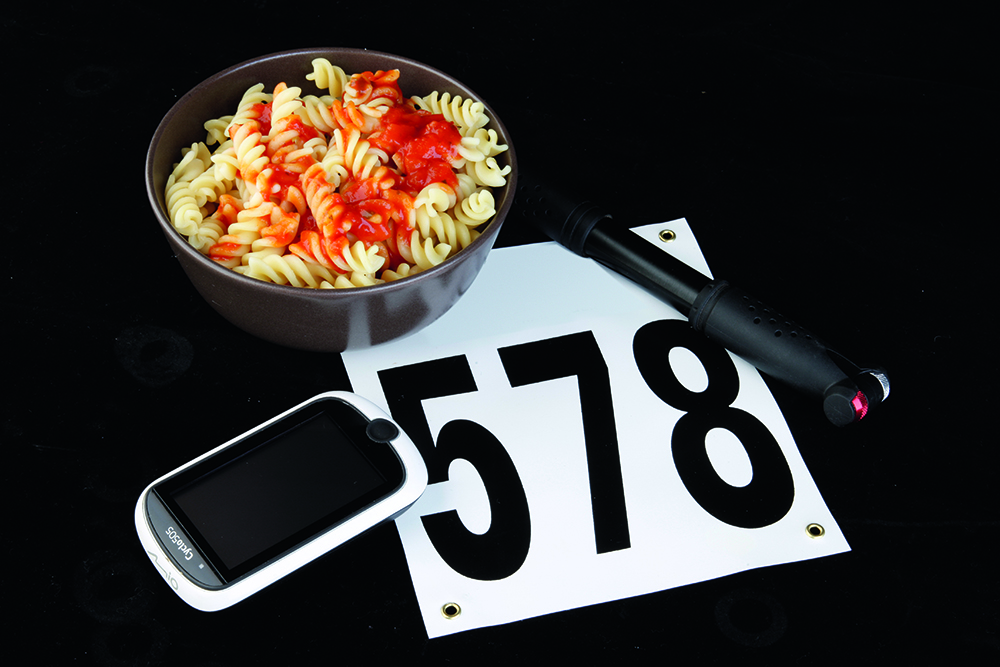
Metabolism can be changed, but do some people’s bodies naturally burn fewer calories? Is the ‘slow metabolism’ a real phenomenon? Probably not — unfortunately for those who’ve been using it as an excuse.
If you’re unfit, you might feel exhausted after an hour’s cycling but you’ve probably not produced much power and so won’t have burned nearly as many calories as a fit rider would over the same duration.
A study at the University of Ottawa published in 2010 found that people overestimated the number of calories they burned in a workout by as much as 300 per cent.
It may be that those who think they have a slow metabolism are burning fewer calories than they imagine and therefore overeating.
The good news is, the fitter you become, the easier it gets to burn more calories.
>>> Do cyclists really need to carb-load before a big ride?
Another risk for regular exercisers is developing bad habits outside of exercise times. The University of Missouri found that active non-exercisers burned more calories than people running 35 miles per week who were otherwise sedentary.
The latter were more likely to ‘reward’ themselves with food because they had exercised. The message is: even if you’re a cyclist, stay generally active and don’t assume your exercise increases your calorie needs exponentially.
Another reason it can be tricky to lose weight is because as you get slimmer you need fewer calories to maintain your weight. For every 0.45kg lost, you need 5.8kcal less per day, so calorie intake needs to be reduced in parallel with weight loss (unless you are exercising more).
Movement is key
Exercise is the answer, believes Professor Mike Gleeson: “You can boost your metabolism. We burn about one kilocalorie per minute at rest, but this can be increased to five per minute while walking and to around 10kcal per minute for jogging, cycling and swimming.”
The fitter you get, the more calories you can burn and the longer you can exercise.
There is also a slight increase in metabolic rate for the 12 hours following exercise as the body works to repair muscle damage and adapt to the exercise completed.
>>> Strength training for cyclists: Is it worth it?
This effect is more pronounced after intense exercise. Similarly, weight training to increase muscle bulk helps increase RMR, and this should be a focus for older people and women who are predisposed to have less muscle.
Indeed, there are significant differences between men and women when it comes to metabolism. Most of these differences make it harder for women to lose weight.
Though they are better at fat oxidation during exercise (one reason why women appear to be better at ultra-distance events relative to men), women lose less body fat than men under the same energy deficit and release less fat from body tissue after exercise, despite having more fat to access.
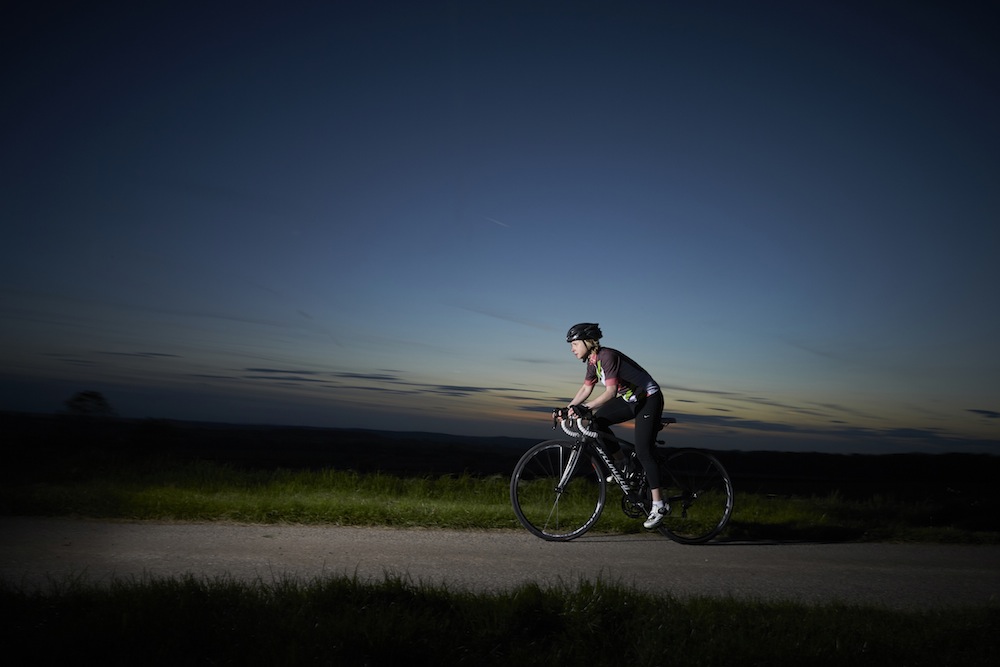
Men are able to eat more calories per kilo of fat-free mass and be leaner than women. Females have to reduce their calorific intake by a greater proportion to lose the same amount of weight.
The main reason for these differences is hormones, principally oestrogen. Related to this, women’s RMR is affected by the menstrual cycle; RMR is lowest just before ovulation and rises by eight to 16 per cent in the two weeks before menstruation.
Plentiful carbohydrate during this time is crucial for hormonal health.
Tracking riders’ metabolism in real-time from the team car might be coming to a bike race near you soon.
Sweat contains the end-products of metabolism, effectively giving a snapshot of what’s going on in the body, revealing blood sugar, lactate and hydration levels.
Scientists have already developed skin patches that can detect blood glucose levels in those with diabetes, which could be used to discern if a cyclist needs to increase fuel intake.
It is already possible to have your metabolic activity measured, at labs such as guruperformance.com, by monitoring metabolic products in air you breathe out at rest and exercising.
This can help determine the proportions of fuels you’re burning and your metabolic flexibility.
>>> How to lose weight cycling: Six essential tips
A fast RMR is not always a good thing. Clinically termed hypermetabolism, it can be a symptom of underlying health conditions such as over-active thyroid (hyperthyroidism).
Athletes who train without adequate nutrition and recovery are at risk of hormonal abnormalities, which can affect metabolism.
Eating adequate calories and adequate carbohydrate to fuel training is key to healthy metabolic function.
Metabolism isn’t genetically determined in the way many people assume. You’re not magically endowed with a fast or slow metabolism, but there’s much you can do to burn fuel more efficiently.
As a cyclist, you can stimulate changes to make your body better at burning fat, to become an endurance machine. By building muscle and being more active, you’ll burn more calories, not only while exercising but all the time.
Remember, you have already discovered the greatest metabolism booster of them all: exercise.

Thank you for reading 20 articles this month* Join now for unlimited access
Enjoy your first month for just £1 / $1 / €1
*Read 5 free articles per month without a subscription

Join now for unlimited access
Try first month for just £1 / $1 / €1
Follow on Twitter: @richwindy
Richard is digital editor of Cycling Weekly. Joining the team in 2013, Richard became editor of the website in 2014 and coordinates site content and strategy, leading the news team in coverage of the world's biggest races and working with the tech editor to deliver comprehensive buying guides, reviews, and the latest product news.
An occasional racer, Richard spends most of his time preparing for long-distance touring rides these days, or getting out to the Surrey Hills on the weekend on his Specialized Tarmac SL6 (with an obligatory pub stop of course).
-
 Gear up for your best summer of riding – Balfe's Bikes has up to 54% off Bontrager shoes, helmets, lights and much more
Gear up for your best summer of riding – Balfe's Bikes has up to 54% off Bontrager shoes, helmets, lights and much moreSupported It's not just Bontrager, Balfe's has a huge selection of discounted kit from the best cycling brands including Trek, Specialized, Giant and Castelli all with big reductions
By Paul Brett
-
 7-Eleven returns to the peloton for one day only at Liège-Bastogne-Liège
7-Eleven returns to the peloton for one day only at Liège-Bastogne-LiègeUno-X Mobility to rebrand as 7-Eleven for Sunday's Monument to pay tribute to iconic American team from the 1980s
By Tom Thewlis